#Biennale Gardens
Text

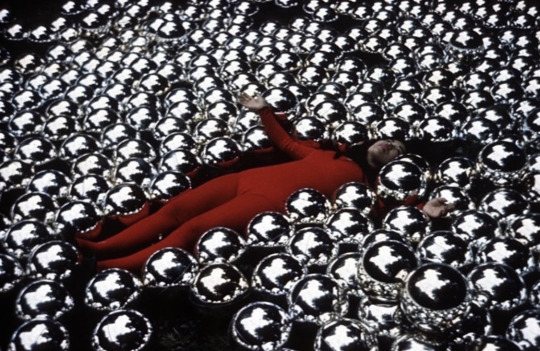
Yayoi Kusama: Narcissus Garden (1966) Location: Venice Biennale, Italy
489 notes
·
View notes
Text

Nordic Pavilion (1958-62) at the Biennale Gardens in Venice, Italy, by Sverre Fehn. Photo by Åke E:son Lindman.
199 notes
·
View notes
Text

Happy New Year
Installation view, Yayoi Kusama in Narcissus Garden at the 1966 Venice Biennale. © Yayoi Kusama. Courtesy Ota Fine Arts, Tokyo/Singapore, Victoria Miro Gallery, London, David Zwirner, New York.
314 notes
·
View notes
Text


thursday, 4.18.24
today i:
did yoga with adriene
did a 30-minute cardio workout
listened to ep. 5 of the coffee break french podcast
studied some french
scrolled through gradcafe and the grad admissions subreddit
listened to ep. 18 of the artcurious podcast
read "becoming modern, an introduction"
watched "representation and abstraction: millais's ophelia and newman's vir heroicus sublimis"
watched finding vivian maier (2013, free on plex)
updated my finances
entered into galley giveaways on goodreads and storygraph
read the latest issue of better homes & gardens
watched an ep. of grey's anatomy
played the sims 4
artnews articles i read today (there's a lot):
"at the venice biennale’s contemporary showcase, living artists examine queer and indigenous legacies"
"pro-palestine protest staged outside israeli and american pavilions at venice biennale"
"a creepy, entrancing german pavilion is this venice biennale’s big hit"
"taking over the australia pavilion, archie moore celebrates 2,400 generations of first nations people"
"for the canadian pavilion, kapwani kiwanga considers the hefty historical importance of the tiny venetian seed bead"
"at the venice biennale, ukrainian artists examine the many realities of russia’s war"
"when african countries debut at the venice biennale, the biggest challenge can be coming back"
11 notes
·
View notes
Photo

📸禧長(旧喜多七右衛門邸)庭園(滋賀県近江八幡市) Kicho Garden, Omihachiman, Shiga ——The former residence and garden of Kita Shichiemon, a merchant family that wholesaled tatami mats to Oda Nobunaga. This historical space is now being used as the center of the international art festival "BIWAKO Biennale"! ——あの #織田信長 に畳を卸した商家“喜多七右衛門”の旧宅と庭園。その歴史的空間は国際芸術祭“BIWAKOビエンナーレ”の発信拠点として活用中! 【通常非公開】 ———————— ▼他の写真や解説のつづきは @oniwastagram のプロフURLかこのURLから。 For more photos and commentary, please visit @oniwastagram 's profile URL or this URL. https://oniwa.garden/kicho-omihachiman/ ———————— #japanesegarden #japanesegardens #kyotogarden #zengarden #beautifuljapan #japanesearchitecture #japanarchitecture #japanarchitect #japandesign #jardinjaponais #jardinjapones #landscapedesign #omihachiman #びわこビエンナーレ #BIWAKOビエンナーレ #近江八幡 #古民家 #町家 #machiya #庭園 #日本庭園 #建築デザイン #ランドスケープ #枯山水 #karesansui #庭院 #庭园 #喜多七右衛門 #omihachiman #おにわさん (Biwako Biennale) https://www.instagram.com/p/CoqsKr7vgD9/?igshid=NGJjMDIxMWI=
#織田信長#japanesegarden#japanesegardens#kyotogarden#zengarden#beautifuljapan#japanesearchitecture#japanarchitecture#japanarchitect#japandesign#jardinjaponais#jardinjapones#landscapedesign#omihachiman#びわこビエンナーレ#biwakoビエンナーレ#近江八幡#古民家#町家#machiya#庭園#日本庭園#建築デザイン#ランドスケープ#枯山水#karesansui#庭院#庭园#喜多七右衛門#おにわさん
85 notes
·
View notes
Text

Pavlo Makov "Magic Garden" etching from the series "Utopa". Breathtaking and unique etching by honored artist Pavlo Makov (1958), who proudly represented Ukraine at the prestigious Venice Biennale in 2022
8 notes
·
View notes
Photo
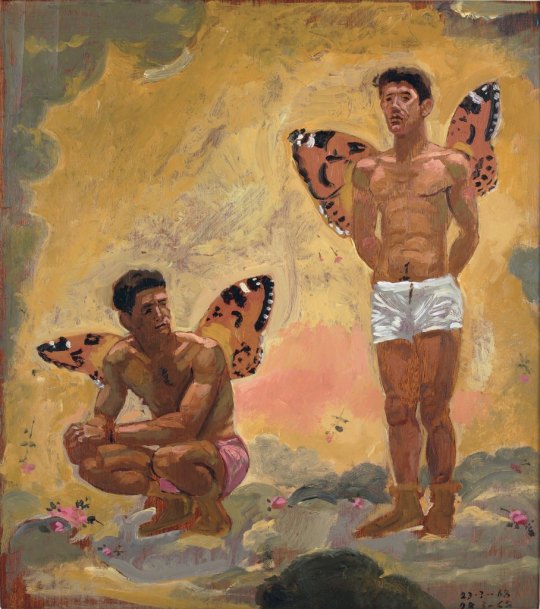

The Paintings of Yannis Tsarouchis
Yannis Tsarouchis is one of a group of twentieth-century Greek artists who portrayed and defined modern Greek identity. A sensual painter influenced by French Impressionism, Tsarouchis is a significant gay artist who painted images of vulnerable men and occasionally strong women.
Born in January of 1910 in Piraeus, Greece, Yannis Tsarouchis initially trained in the studio of Byzantine artist Fotis Kontoglou, an influential Greek modernist who introduced him to Byzantine iconography. He later studied at the Athens School of Fine Art, graduating in 1935, The major influence on Tsarouchis’ work, however, came from a trip to Paris, Istanbul, and Italy in the mid-1930s that exposed him to the bohemian lifestyle and both Renaissance and Impressionist art.
Tsarouchis’ work moved in two main directions: toward the orientalist and sensual, with strong influences from Matisse, and toward the ancient Greek ideal as expressed by the Renaissance and the Baroque movements. In doing so, Tsarouchis played a pivotal role, alongside his contemporaries, in portraying and shaping modern Greek identity.
Returning to a war-torn Greece in 1936, Tsarouchis become a soldier in the Greco-Italian war in 1940. With a more political and humanist perspective after his service, he began painting scenes of young men who were preparing to defend their homeland from the rise of Fascist Italy. Gay artist depiction of the soldiers and sailors was controversial; some of his exhibits were taken down by censors, who saw his work as unpatriotic and degrading to the Greek male image.
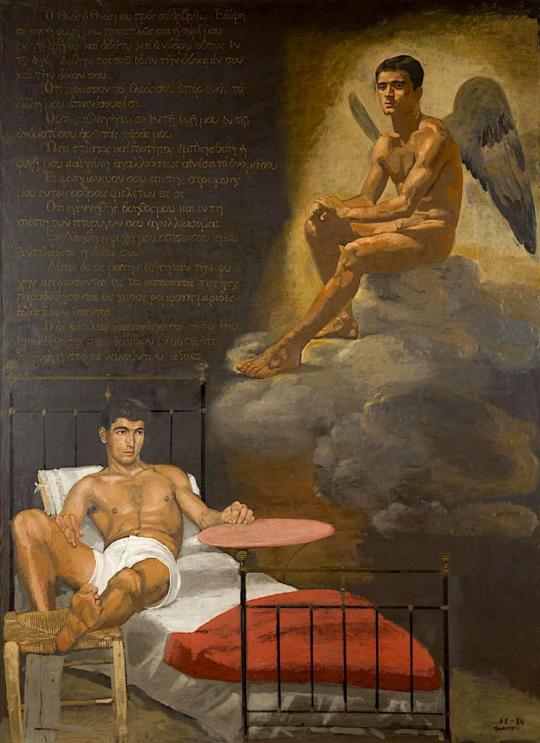
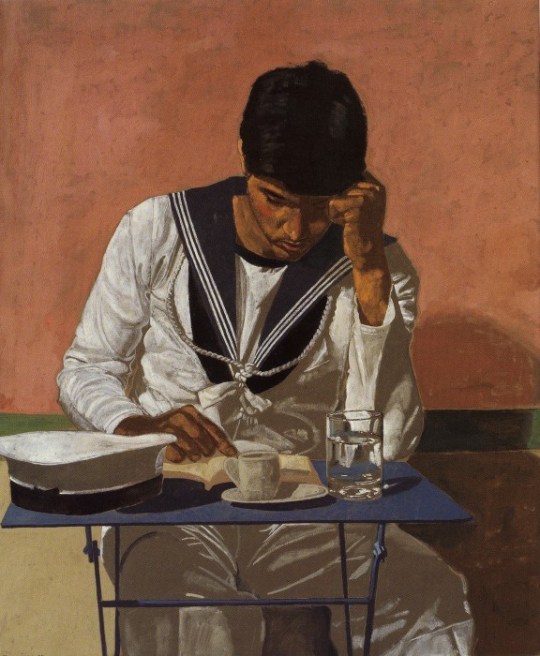


Tsarouchis’ paintings of soldiers and sailors he admired captured not only a Greek identity, but also a gay awareness. Transforming Rodin’s bronze statue into an icon for Greek culture, he painted his 1936 “The Thinker”, showing a modern young Greek sitting on a cafe stool, a cigarette in hand, with a faraway look in his eye. Among Tsarouchis’ other paintings are: the 1939 “Young Man Posing as an Olympic Statue”; “Sailor with Coffee Cup”painted in 1954; and the 1956 “Forgotten Guard”.
Yannis Tsarouchis established in 1949, along with other Greek artists including sculptor Nikos Nikolaou and seascape painter Panayiotis Tetsis, the “Armos” art group which worked to promote Greek traditional painting. In 1951 he had exhibitions in Paris and London and participated in the 1958 Venice Biennale. Gay artist moved to Paris in 1967 in a self-imposed exile to.wait out the years of military dictatorship in Greece.
During this exile, Tsarouchis designed theater sets for productions at Milan’s La Scala opera house, the Greek National Theater, the Dallas Opera, and London’s Covent Gardens, as well as the annual Avignon Art Festival in France. He also designed sets and costumes for films by Jules Dassin and Michael Cacoyannis. After his return to Greece in the middle of the 1970s, he designed an acclaimed operatic set for director Franco Zeffirelli’s production of Italian classical composer Luigi Cherubini’s comedic opera “Médée” at the ancient amphitheater at Epidauros.
Residing in northern Athens at the age of seventy nine, Yannis Tsarouchis died on July 20th of 1989. The Yannis Tsarouchis Museum, an art collection hosted in the artist’s home in Maroussi, Athens, was officially opened in 1982 in recognition of Tsarouchis’ contributions and respect for Greek culture. Upon the reading of his will and testament, it was found that Tsarouchis bequeathed all his assets to the Yannis Tsarouchis Foundation.

193 notes
·
View notes
Text


Dixit Algorizmi: The Garden of Knowledge, Uzbekistan Pavillion, this marked country's first-ever showing at the Venice Art Biennale.
139 notes
·
View notes
Video
scarpa sculpture garden by chris schroeer-heiermann
Via Flickr:
Biennale grounds, Giardini Venice, Italy 1952 Carlo Scarpa, Architect
#2012.09.29 venedig#carlo scarpa venedig venice biennale#carlo#biennale#sculpture#architecture#giardini#concrete#roof#sail#shadow#schatten#segel#ziegel#brick#fountain#pool#flickr
45 notes
·
View notes
Text
Curator Spotlight: Natasha Boas

We’re ringing in the new year with a firecracker: one of our most hilarious, crazy features ever, an interview with Natasha Boas, whose sparkling wit is matched only by her taste in literature and chairs. You’ll have to read below to understand, but we’ll say now that this is a woman who was once Jacques Derrida's student and sat on his kitchen chairs in his apartment in Paris. A conversation with Boas, an independent scholar and curator (and thinker), had us traipsing all over the noosphere and our own backyard in San Francisco, where she became our tour guide to the hidden currents of a city we thought we knew well.
Studio AHEAD: In your home you have several towers of precariously stacked books. We’re going to name a few and would like you tell us the perfect chair/sofa/magic carpet on which to read them:
La honte (Annie Ernaux)
Natasha Boas: I have always been a huge fan of Ernaux’s and have read everything she has written in French, and then in 2022 she received the Nobel Prize in Literature so her novels are finally more available in English. La honte is about the shame a young woman experiences about her childhood and the woman she becomes. It’s autofiction, one of my favorite genres. I think I would suggest reading La honte on any Madame Récamier daybed—perhaps specifically on my antique nineteenth-century French iron folding bed. I grew up with it as my childhood bed and it has tiny wheels—when we once had an earthquake in San Francisco in the 1970s, I remember waking up having rolled across by bedroom from the garden corner to my fireplace.
SA: Specters of Marx (Jacques Derrida)
NB: For Derrida, the spirit or “ghost” of Marx was even more relevant after the fall of the Berlin Wall in 1989. This essay was the plenary address of "Whither Marxism?," a conference on the future of Marxism held at the University of California, Riverside in 1993. Derrida was my professor in Paris and a very modest man who would have wanted us to read his book on a simple kitchen chair—perhaps a Charlotte Perriand Bausch chair from the 50s that came secondhand with his humble apartment—where the caning is damaged and used and it is broken and somewhat imbalanced.
SA: Three Essays on the Theory of Sexuality (Sigmund Freud)
NB: This book contains the iconic essay in which Freud reveals his famous Oedipal theory among other things. It should be read in your mother’s lap—haha! No, it should be read on Freud’s divan couch of course! It may be the most famous couch in history and can be admired in Freud’s study in London at The Freud Museum at 20 Maresfield Gardens in the Hampstead neighborhood. The term “on the couch” became the euphemism for what psychiatrists do because of this very couch shaped like a chaise long with a Persian rug laid over it. Of course, I contributed to a fundraiser launched in 2013 to help reupholster the legendary couch. It seemed very important to me at the time.
SA: Leonora Carrington: The Story of the Last Egg (Leonora Carrington)
NB: This book is the accompanying catalogue to Gallery Wendi Norris’s 2019 exhibition of the same name in New York City. In addition to the show, the gallery hosted a two-day symposium on Carrington. It began with a dramatic reading of Leonora's play, titled Opus Siniestrus: The Story of the Last Egg, which in many ways predicts the dystopian situation of women’s reproductive rights today. My talk “The Leonora Carrington Effect: What We Can Learn from Leonora Carrington Today” became an essay for the book.
These ideas on the relevance of Carrington today resonated a year later at the Venice Biennale “Milk of Dreams” with its focus on Carrington and other historic Surrealist women artists. I wrote my dissertation years ago on this seminal modernist movement in art, which continues to influence my work. Currently, I have curated the exhibition on the post-Surrealist Gertrud Parker: The Possible at Marin MOCA, which includes Leonora Carrington, Leonor Fini, Alice Rahon and other influential Surrealist women. It is up through March 31 and I highly recommend a visit. It also features the famous Dynaton artists Luchita Hurtado, Wolfgang Paalen, and Gordon Onslow Ford, who convened in Inverness in west Marin County last century.
I think I would read The Story of the Egg on the bed that the Surrealist artist Max Ernst made for his wife, the artist Dorothea Tanning. It is said that she hated the bed and hid it out of view in the basement of their Provence house, but it is currently being shown on the top floor at a small regional Max Ernst museum in Seillans, near my family house in the Var, Cote d’Azur region. It’s a bizarre six-post structure with a mirror, green metal leaves, a faux brown fur bedspread and several circular paintings attached to it—but seems like the perfect bed for lounging on to read this provocative book.
SA: You are an expert on countercultures and in particular the Mission School. Is there anything you have learned from them—whether related to art or not—that you apply to how you interact, live in, go about San Francisco? This is of course a movement whose members reimagined what was around them.
NB: Yes, I have always been drawn to countercultures, alternative art movements, and under-recognized artists. What drew me to the Mission School artists was that it was an “affective” community—one based on shared sensitivities, a shared neighborhood, and friendships. Graffiti, studio painting and the San Francisco Art Institute were touch points for the group. In many ways I see this group of artists as a continuation of another SFAI group, the Rat Bastards Protective Association with Jay deFeo, Bruce and Jean Conner, Manuel Neri, and others. In fact, Ruby Neri, Manuel’s daughter, who was raised in Inverness and educated at SFAI, literally connects the two movements. I learned that there can be a correlation between street art and studio practice through her, Barry McGee, Alicia McCarthy, Chris Johanson, and Margaret Kilgallen.
These artists were not precious, they used simple materials often culled from garbage found in the city and they always included their friends’ work in their exhibitions, and they still do. That is very much the “Bay Way” of making art. It has influenced my way of curating too. I am not afraid of the heteroclitic or telling new stories. I just curated a show this fall: “Old Friends/New Friends” at Creativity Explored, which is a studio that supports neurodiverse artists or what we used to refer to in art history as “outsider artists” and the expanded Mission school artist community.
I grew up in SF in the 1970s. I even lived at the now defunct radical artist colony The Farm founded by the conceptual artist Bonnie Ora Sherk under what was then Army Street overpass and now Cesar Chavez. I worked at the Café Trieste in North Beach as a barista and served the likes of Allen Ginsburg. I read my poetry at City Lights Book Store and saw the Dead Kennedys perform at The Mabuhay Gardens. We were around when Harvey Milk was assassinated and when SFMOMA was on the fourth floor of the War Memorial Veterans building on Van Ness Avenue. This group of Mission School artists are my generation. We vibe on the same San Francisco history.
SA: I am curious as to what happens in your curation when you bring institutional outsiders inside the institution. Perhaps nothing happens. Perhaps it changes everything. Perhaps it ruins everything.
NB: In my experience—magic happens. But I have always taken risks—like bringing a trailer, which I bought with the Indigenous artist Brad Kahlhamer at an Arizona swap meet for a hundred dollars, into a museum gallery to create a nomadic studio space. We had to fumigate the trailer to make it museum compliant and we built out a proscenium so we could also use it as a stage for local Native performances. The exhibition was appropriately entitled SWAP MEET and played on all the valences of cultural exchange.
SA: You speak so much about San Francisco’s history, and so much has changed, that I wonder if counterculture is still possible in this city?
NB: Yes—it is always possible especially in our city with its cyclical history of boom and bust! There is always some kind of counterculture operating. We just need to ask “which culture is counterculture countering?” and then we can identify it. And we should always be brave enough to counter culture through the sub, the underground, the transversal. I just participated in a show at the Palais de Tokyo in Paris called The Termite Bites and it looked at artists who are practicing—literally and figuratively—below ground.
SA: We always ask the person interviewed how they came to California. We’ll pose this question to you with a twist. How did you come to California? And can you trace the history of how one piece of artwork that you own came into your possession here in California?
NB: My family came to SF from France in the late 1960s as part of a larger movement of young people seeking alternative lifestyles and new ideas—I was raised in a vibrant multicultural city and went to a French lycée and roamed freely around town on Muni. Later, I moved east for college and then lived and worked as a curator and professor in New York and Paris for over 20 years, when I returned back to the Bay to raise my family.
Most of my collection is from artists I have worked closely with over the years in all three places—either gifted or swapped. I am particularly attached to an Etel Adnan (1925-2021) Mount Tamalpais artwork I have from my time working with her in Paris. Adnan—who was born in Beirut, Lebanon, died in Paris, and lived an important part of her life with her life companion, the artist Simone Fattal in Sausalito—is a transnational link for me between my two homes and two cultures—in her case three cultures. Her poems and drawings in the book Journey to Mount Tamalpais speak to me the most; it has been re-edited recently by my friend Omar Berrada.
SA: Lastly, in the spirit of Guy Debord and the Situationists, if you were doing a dérive-style walk around San Francisco, where might it take you?
NB: My dérive would always lead me back to the Lyon street steps at Broadway. My friend Marc Zegans just published a book of poems about this important passage way in the city. Our SF was more of a village, pre-tech booms. I grew up and went to high school in Presidio Heights. It was very sleepy. We lived on those steps as teens, overlooking the bridge. We had our first kisses there, smoked our first joints, played the guitar, the city was ours.
Photos by Ekaterina Izmestieva
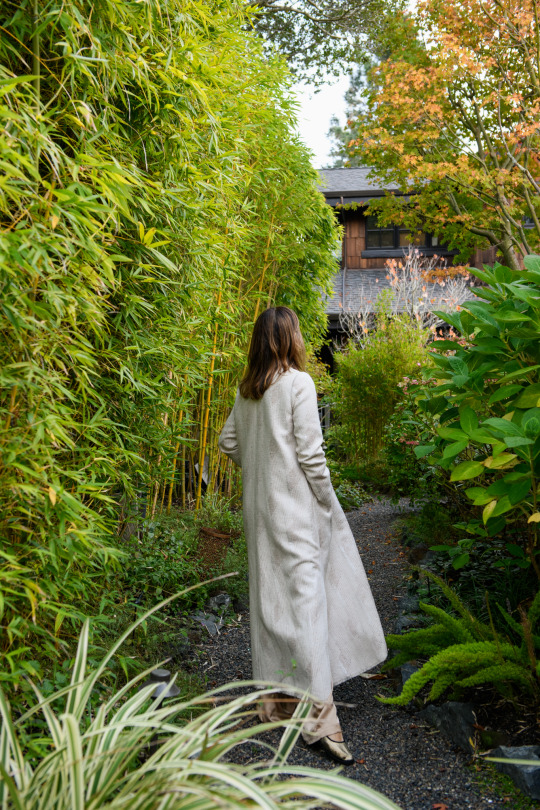

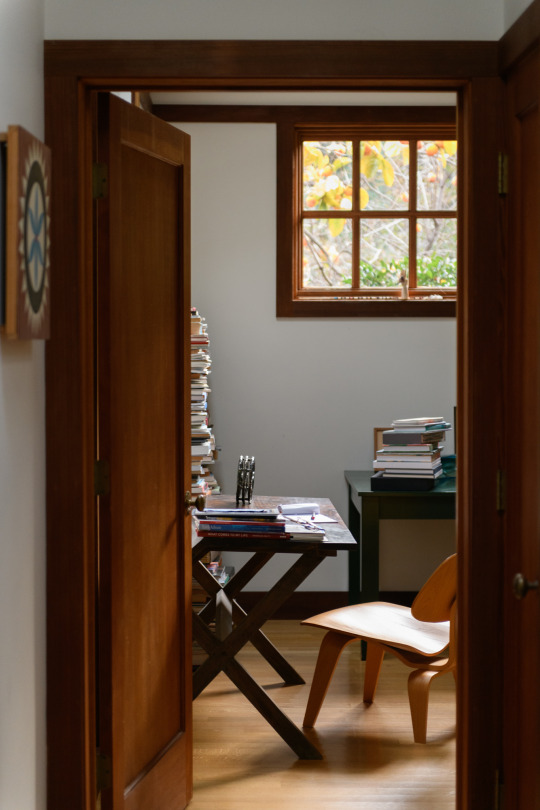
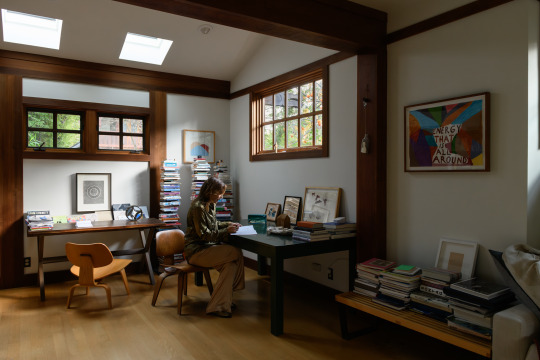

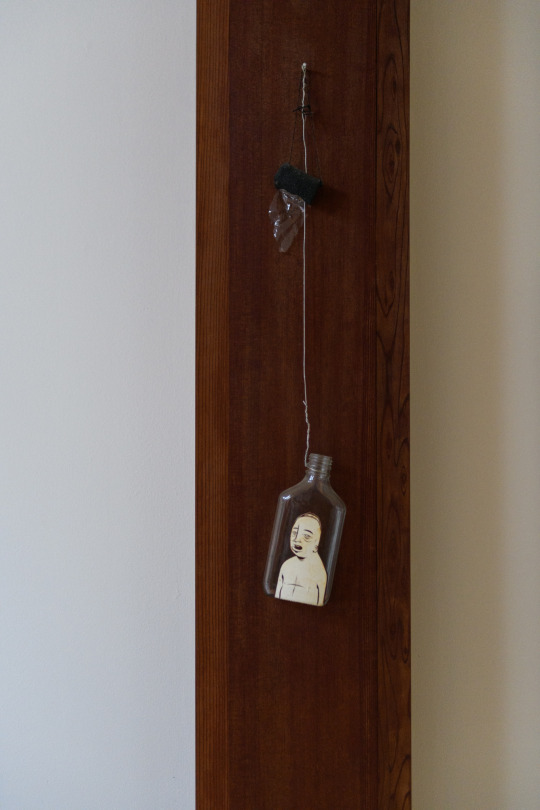
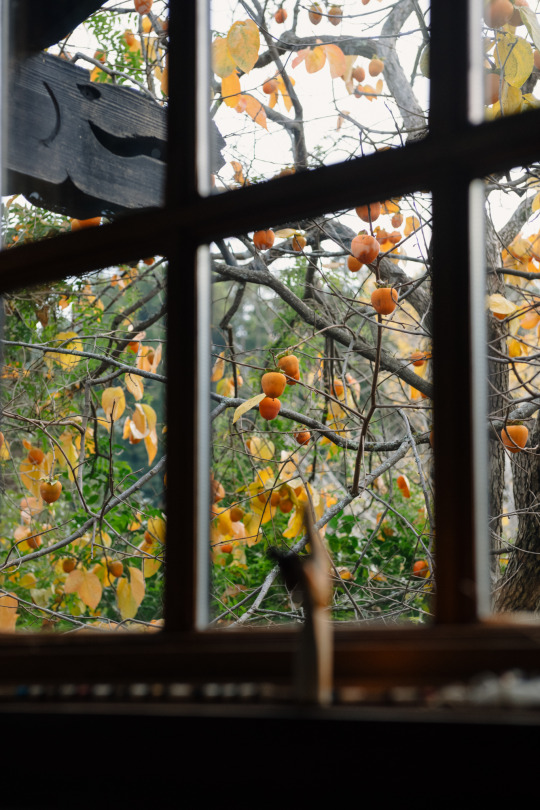



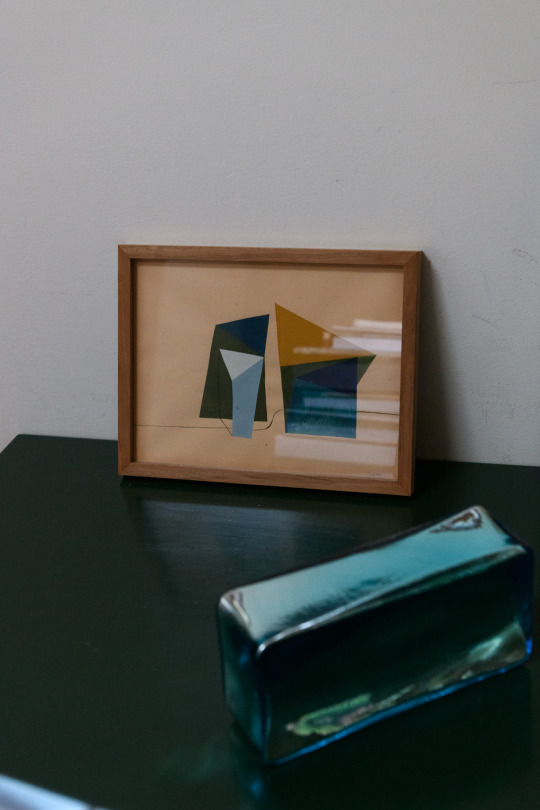
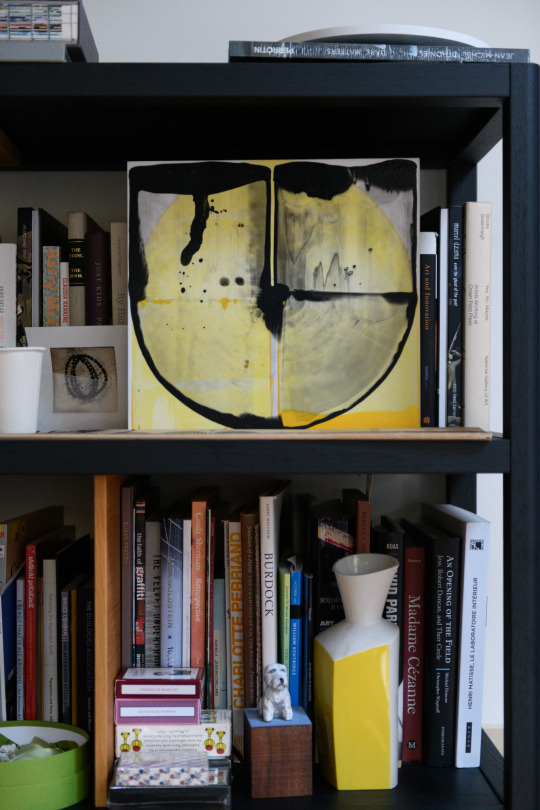
3 notes
·
View notes
Photo

QMM Cultural Center in #Merida, Mexico by Materia + Gustavo Carmona @_materia. Read more: Link in bio! Photography: Jaime Navarro @jaimenavarros_estudio. This project is part of the original premises and property of the “Quinta Montes Molina” located in Merida, Yucatan. The house was built in 1906 and became an architectural icon and emblem of the Paseo Montejo, the most notorious avenue on the city in which most of the early century houses were built during the sisal boom. The house began holding important social events in its gardens in the year 2000. In 2006 it also opened as a museum, displaying all its artifacts, original furniture, and art. In 2015 Materia was commissioned to design a pavilion that could hold social and cultural events while integrating a new architecture with the existing building. The pavilion was awarded the silver medal of the 2015 Architecture Biennale of Mexico City… #mexico #yucatan #архитектура www.amazingarchitecture.com ✔ A collection of the best contemporary architecture to inspire you. #design #architecture #amazingarchitecture #architect #arquitectura #luxury #realestate #life #cute #architettura #interiordesign #photooftheday #love #travel #construction #furniture #instagood #fashion #beautiful #archilovers #home #house #amazing #picoftheday #architecturephotography #معماری (at Mérida, Yucatán, México.) https://www.instagram.com/p/CpBCkkOuU7q/?igshid=NGJjMDIxMWI=
#merida#mexico#yucatan#архитектура#design#architecture#amazingarchitecture#architect#arquitectura#luxury#realestate#life#cute#architettura#interiordesign#photooftheday#love#travel#construction#furniture#instagood#fashion#beautiful#archilovers#home#house#amazing#picoftheday#architecturephotography#معماری
17 notes
·
View notes
Audio
Made a mix for the first time in a while. Forgot that it’s fun to do, should get back to doing it more often.
Tracklist under readmore
1. The Dentists // Strawberries Are Growing In My Garden (And It’s Wintertime)
2. Camu Tao // Intervention
3. audiobooks // The English Manipulator
4. Alex Chilton // Wouldn’t It Be Nice (Live)
5. Baaba Maal // Miyaabele
6. The Band // When I Paint My Masterpiece
7. Tenniscoats // Baibaba Bimba
8. The Auteurs // After Murder Park
9. Archers of Loaf // Death in the Park
10. African Head Charge // Language and Mentality
11. LL Cool J // Untitled (El Shabazz)
12. Venetian Snares // 2 Dollars
13. Latyrx // Off (with) Their Heads [Be Prompt]
14. The Suburbs // Credit in Heaven
15. Ann Magnuson & John Cale // Helmut Newton Told Me/Wish You Were Here/Oh! To be in the Venice Biennale
16. James Pants // I Saw You
17. The Fall // The Mixer
18. Nina Nastasia // Nobody Knew Her
19. Louis Jordan & His Tympani Five // Ration Blues
20. Mt. Feral // Stores Will Foreclose
21. Scarface // I’m Dead
10 notes
·
View notes
Text
Paul first met the art dealer Robert Fraser in the spring of 1966, at John [Dunbar] and Marianne's apartment in Lennox Gardens. This was shortly before Robert and John went to the Venice Biennale together, for which they were planning their joint strategy. Fraser represented Harold Cohen, who was one of the five young British artists to be shown at the British pavilion. Paul listened to their art talk and was impressed by Fraser's ideas. In the course of a few more encounters Paul and Robert became rather unlikely friends. Robert was a nervous Old Etonian homosexual with a fantastic eye for art. He was also a heroin addict. Paul was interested in art but was mainly attracted to Surrealism, which was not one of Robert's strong points, though as an art dealer he was happy to be of service.
[…]
PAUL: “[Robert’s home at 20 Mount Street] was a big posh flat. There would always be a bunch of various friends around, as there were at John Dunbar's, and people I didn't necessarily know, who would be from the upper classes, not from our group. There might be Lord Londonderry, someone like that, and there were Bonham-Carters. There were a few of these sort of people with double-barrel names who I would say 'Hi' to but they were generally tripping or a little bit too out of it, actually, for my liking. I liked to sit and giggle and get a bit stoned and then go home. They wanted to stay the week - often. For me, at that time, the limit was joints. Later it moved to coke, but that was later, shortly before Sgt. Pepper. I was introduced to coke through Robert, who was messing around in the upper echelons of drugs, including heroin.”
By 1966 the crowd at Robert's included a complete cross-section of the London scene; everyone from Sid Caesar, the American comedian, then famous for the film It's a Mad Mad Mad Mad World, to the screenwriter Terry Southern, then in London for the making of Casino Royale. Keith Richards, Brian Jones and Anita Pallenberg could often be found lounging in their crushed velvet and antique lace on Robert's day beds. Photographers, artists, musicians and old school friends sampled Robert's drugs and disported themselves upon his antique rugs. School chums included the Ninth Marquess of Londonderry, who played drums at Eton and whose wife Nicolette was one of the last debutantes to be presented to the Queen.
They all gathered at Mount Street, in the kind of social mix of East End photographers and West End aristocrats that so characterised the sixties. As far as Robert was concerned, background didn't matter as long as the person was someone special. Christopher: ‘Robert was a “principal only” person. He wasn't interested in people who were appendages of somebody else. He really wasn't interested in the also-rans, people who were quietly going along doing something. They had to have some sort of star quality, even if it wasn't visible, it had to be something there.’
[—from Paul McCartney: Many Years From Now, Barry Miles]
#robert fraser#paul mccartney#swinging london#1966#the beatles#barry miles#paul mccartney: many years from now#many years from now#paul and robert fraser
17 notes
·
View notes
Photo

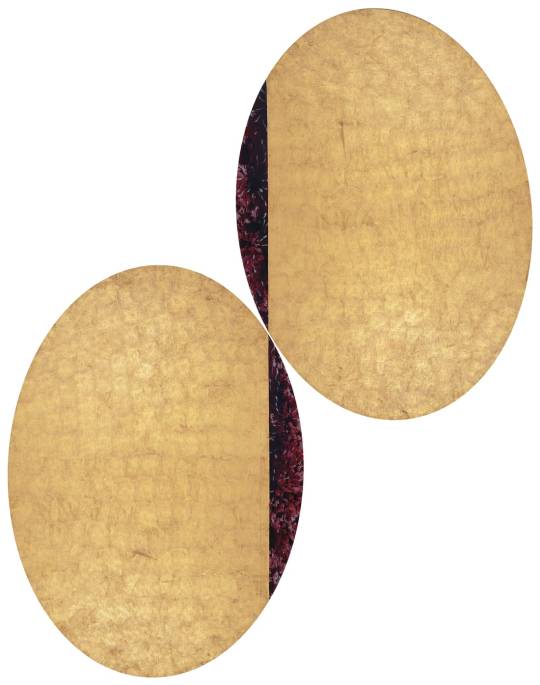

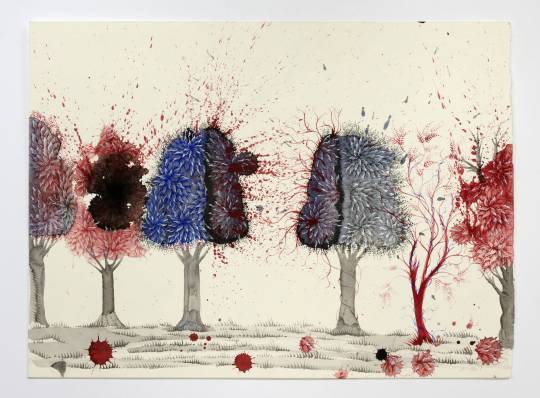

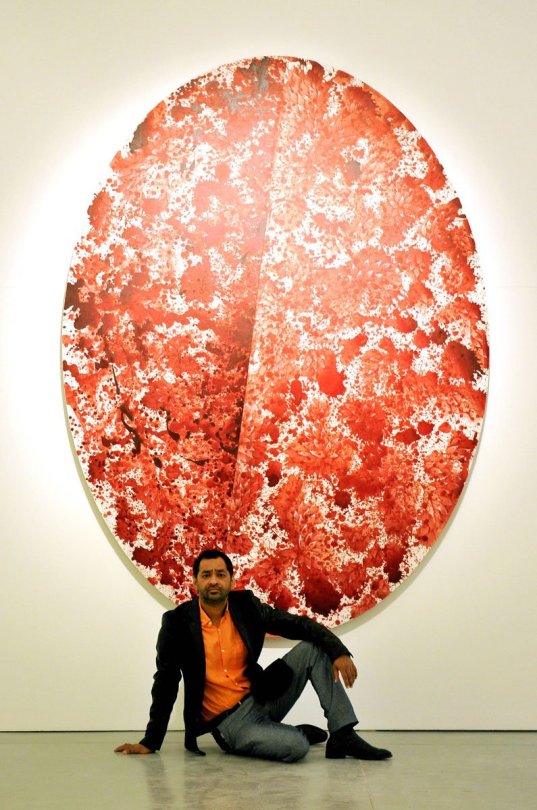
Imran Qureshi, Pakistani, b. 1972
Born in Hyderabad, Qureshi lives and works in Lahore, Pakistan. He studied miniature painting at the National College of Arts in Lahore, where he now teaches the discipline. Considered one of Pakistan's most important artists, he has received international recognition for his site-specific installations that respond to architectural space, referencing the historical or political significance of the buildings that contain them.
These include Blessings Upon the Land of My Love, created in 2011 for the Sharjah Biennial, and They Shimmer Still, created for the Biennale of Sydney in 2012. In 2013, he created a large-scale, site-specific work for The Metropolitan Museum of Art’s Roof Garden Commission in New York. The same year he was awarded the Deutsche Bank’s Artist of the Year and received his first solo exhibition in Europe at the Deutsche Bank Kunsthalle in Berlin.
https://ropac.net/artists/71-imran-qureshi/
5 notes
·
View notes
Photo

Personal Structures | Venice Biennale Last month our exhibition ‘Personal Structures - Reflections’ opened at Palazzo Bembo in Venice. Organized by @ecc_italy during @labiennale , the event will run from 23 April to 27 November 2022.
In this series of 10 images I created a personal impression of the exhibition at #PalazzoBembo (near Rialto bridge). Two other locations: Palazzo Mora and Marinaressa Gardens. Featured images: 1-2. My work, Into the "Rising Light" 3. Palazzo Bembo (façade) 4. @fintanwhelan 5. @deannasirlin 6. @raulesteras 7. @galeriemyrtis 8. Palazzo Bembo (staircase) 9. @shanequagay_ @simonemonney 10. @katja.tukiainen @maria.wolfram If you visit Venice this exhibition is a must-see event. Free entry, open daily from 10-18 hrs. Closed on Tuesdays. #labiennale #labiennaledivenezia #personalstructures #PersonalStructures2022 #ECCItaly #ECC #paulbrouns (bij Palazzo Bembo) https://www.instagram.com/p/CeCAQaBMkL1/?igshid=NGJjMDIxMWI=
#palazzobembo#labiennale#labiennaledivenezia#personalstructures#personalstructures2022#eccitaly#ecc#paulbrouns
13 notes
·
View notes
Photo

@matiasdel.campo, architect, designer, associate professor at Taubman College of Architecture and Urban Planning, University of Michigan, director of the AR2IL, and co-founder of the architecture practice SPAN, will be lecturing at the Computational Design: NEXT 10 conference. - Join now, link in bio or: https://parametric-architecture.com/cd-next/ - Event details: Date: July 16-17, 2022 (Saturday & Sunday) Time: 12:30 - 20:30 UTC Where: ZOOM Online - Matias conducts research on advanced design methods in architecture, primarily through the application of Artificial Intelligence; collaborating with Michigan Robotics and the Computer Science department. His firm SPAN gained wide recognition for the design of the Austrian Pavilion at the 2010 Shanghai World Expo, and more recently, for the Robot Garden at the Ford Robotics Building. SPAN’s work was featured at the Venice Architecture Biennale in 2012 and 2021; ArchiLab in 2013, and the Architecture Biennale in Vienna and Buenos Aires in 2019. Solo shows include “Formations,” at the MAK in Vienna and the exhibition "Sublime Bodies" at the Fab Union Gallery in Shanghai, China. Matias del Campo was awarded the Accelerate@CERN fellowship, the AIA Studio Prize, and was elected to the boards of directors of ACADIA and IJAC the International Journal of Architectural Computing. In 2016 and 2020 Matias del Campo co-chaired the ACADIA conference as well as chairing the 2020 DigitalFUTURES edition. @cdnext @parametric.architecture @designmorphine @ekimroyrp @pa.next @hamithz @thepaacademy #designfordesert #houdini #houdinifx #workshop #webinar #photography #rhinonerd #coding #fashiondesign #artist #parametric #parametricdesign #parametricarchitecture #computationaldesign #computational #computation #grasshopper3d #rhino3d #rhinoceros3d #algorithm #design #art #architecture #conference #superarchitects #nextarch #rhino #architecturestudent #cdnext #conference (at 𝓣𝓱𝒆 𝓤𝒏𝒊𝓿𝒆𝒓𝒔𝒆) https://www.instagram.com/p/CfYbaTMOaPK/?igshid=NGJjMDIxMWI=
#designfordesert#houdini#houdinifx#workshop#webinar#photography#rhinonerd#coding#fashiondesign#artist#parametric#parametricdesign#parametricarchitecture#computationaldesign#computational#computation#grasshopper3d#rhino3d#rhinoceros3d#algorithm#design#art#architecture#conference#superarchitects#nextarch#rhino#architecturestudent#cdnext
6 notes
·
View notes